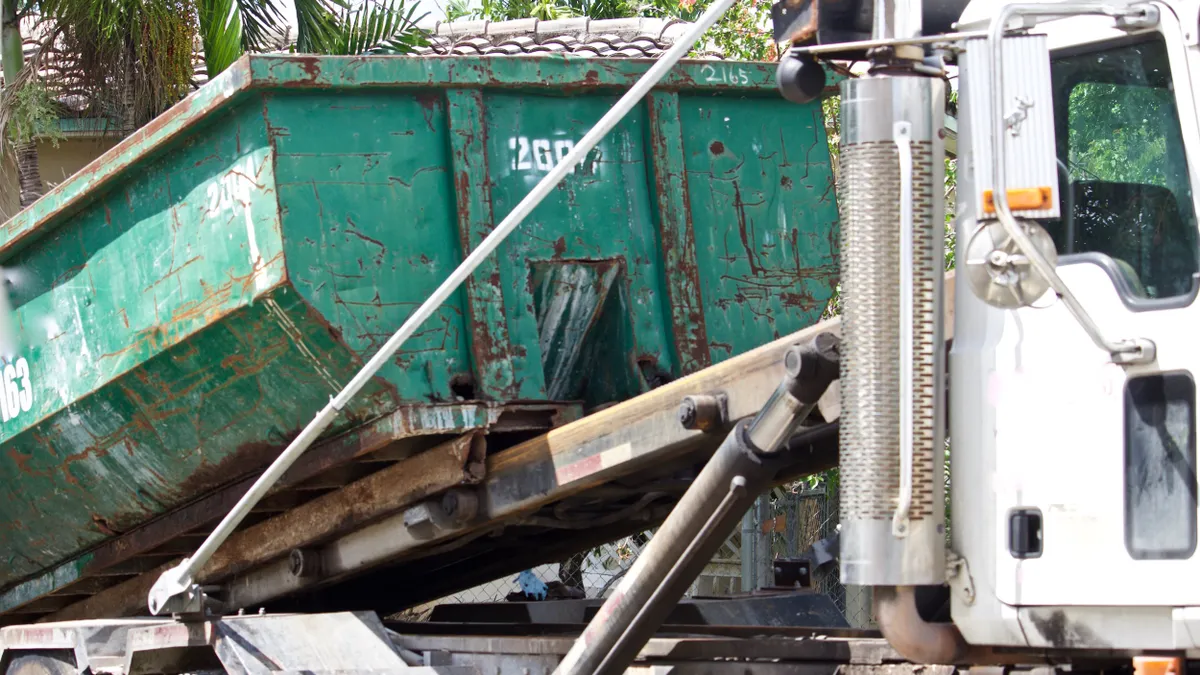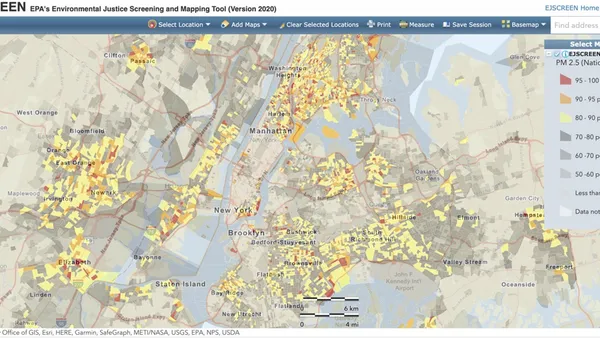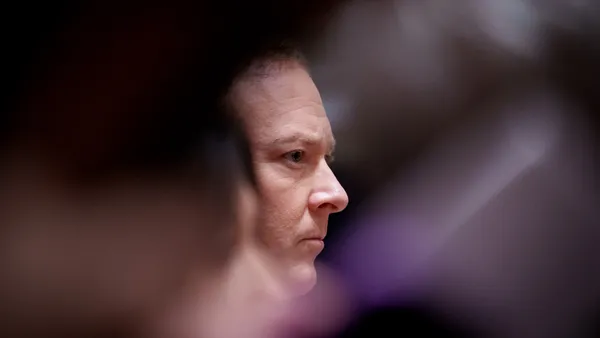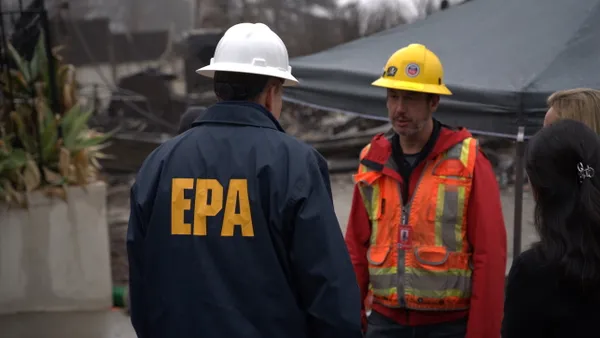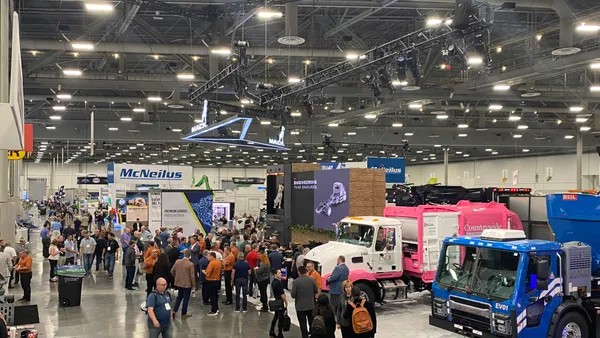Dive Brief:
- New landfill methane emissions standards in Oregon will regulate a larger set of landfills than before, and already-regulated landfills will need to meet additional monitoring and measurement requirements. It is the most stringent standard of its kind in the United States, Department of Environmental Quality officials said.
- The new regulations, which went into effect Oct. 1, will affect all types of landfills in the state, with requirements that vary and apply differently based on factors such as the tonnage of waste the landfill holds and the amount of methane the landfill already produces based on monitoring data.
- The rules include provisions that go beyond existing federal regulations, and officials expect it to become a model for other states hoping to tighten their regulations. Some landfill operators have expressed concerns about the financial impact of installing emission control systems earlier than planned or applying for permits that were previously not required.
Dive Insight:
Oregon’s new rules are part of a larger effort in the state to curb greenhouse gas emissions, including through "cap and reduce" programs for certain types of fuels, but landfills have received special DEQ attention because of their role as a major contributor to this type of pollution.
Many landfill operators have known the state would implement changes since spring 2020, when Gov. Kate Brown directed Oregon to crack down on methane emissions through an executive order that specifically called out landfills. She directed the state to align its standards with California’s — the strictest ones at the time. Managing methane in landfills is part of the state’s goal of reducing methane emissions by 45% from 1990 greenhouse gas levels by 2035 and achieving an 80% reduction by 2050, according to the order.
Methane gas emissions sources are some of the highest greenhouse gas emitters in the state, and in 2017, six of the 25 largest stationary sources of methane gas emissions in Oregon were landfills, DEQ said.
Pat Sullivan, senior vice president for SCS Engineers, and a technical expert on the DEQ’s landfill gas rules advisory committee, said the new rules apply to new landfills and all that have received solid waste after Nov. 8, 1987. These include a number of privately run landfills, 38 owned by local governments and 51 that have closed. It includes MSW landfills already regulated by federal new source performance standards. “The state recognizes that these larger landfills are already well-regulated, but they wanted to enhance monitoring to achieve greater reductions in emissions,” he said.
The state’s smallest landfills will be required to report their tonnage of waste-in-place, but they won’t be required to take additional steps until the amount surpasses 200,000 tons, according to a DEQ guidance document.
Medium landfills, those between 200,000 and 2.5 million tons, will need to calculate potential methane generation through a modeling process. If modeled emissions exceed 664 metric tons of methane per year, operators may need to install a landfill gas collection and control system or show their actual emissions are less by performing quarterly surface monitoring. Before the rule change, landfill gas emissions were only regulated from landfills with a design capacity of over 2.5 million metric tons, DEQ said.
Large landfills, those above 2.5 million tons, are already performing quarterly monitoring, but they will now need to file more detailed paperwork listing all emission measurements instead of just exceedances, and their testing methods will need to follow more stringent requirements. These landfills may also need to install or upgrade landfill gas collection and control systems based on the results of those tests. These systems will need to show that they have a 99% methane destruction efficiency, which isn’t explicitly mentioned in current federal laws, Sullivan said.
The new Oregon regulations likely will hit medium-sized landfills the hardest, as many of these sites don’t yet have a gas collection system and had not planned to install one based on the previous Oregon emissions rules, Sullivan said. This could be "a significant capital investment," possibly in the ballpark of $1.5 million to $3 million depending on the site’s size. "For some sites, that’s money they had planned to spend eventually, but for some sites it’s not,” he said.
Existing large sites may need to eventually replace features such as candlestick flares, which are being phased out under the new rules, or spend money to upgrade their current gas collection systems. However, said Sullivan, “these large sites will already have a gas system, so it’s not as big of a financial hit.”
During the public comment period, landfill operators expressed concerns about the timelines given for planning and installing the equipment, prompting DEQ to extend the period to 30 months after emissions exceed the thresholds.
The new rules will also direct certain landfills to apply for air quality permits that previously weren’t required. About 12 of the state’s landfills already have some type of air permit, but DEQ estimates that about seven landfills will be newly required to obtain a Simple Air Contaminant Discharge Permit (ACDP), while eight landfills will be newly required to obtain a Standard ACDP. Those numbers could change as DEQ works with operators to learn more about their facilities as they enact the changes, said Jennifer Flynt, chief public affairs officer.
Landfill operators and representatives such as the Oregon Refuse & Recycling Association have been “closely engaged” with DEQ in the months leading up to the rules change, but ORRA Government Affairs Director Andrea Fogue said the organization is still “assessing what it will mean for our members.”
Sullivan said he expects that there will be “a series of growing pains” for landfills that must figure out which new regulations will apply to their operations. Compounding that confusion is the fact that some landfills this year just went through the process of figuring out how to comply with other new rules, including the EPA’s once-delayed emissions rule that applies to the majority of the MSW landfills in the country, he said.
Maryland and Washington are among the states considering more stringent changes to their landfill methane emissions standards, with their changes likely to follow Oregon's or California's model, Sullivan said. Oregon's new rules are extremely similar to those in California, he said, though California's rule only applies to MSW landfills and and has a less strict threshold for the size of landfills required to model potential emissions.
The Maryland Department of Environment recently discovered its landfills were emitting more methane than previously thought, and it has since hosted several stakeholder meetings to discuss possible regulatory updates to curb the emissions. Meanwhile, Washington is starting a data-collection effort “and asking questions about what Oregon has done,” Sullivan said. Even more states could follow suit. “What happens in California doesn’t stay in California,” he said.





